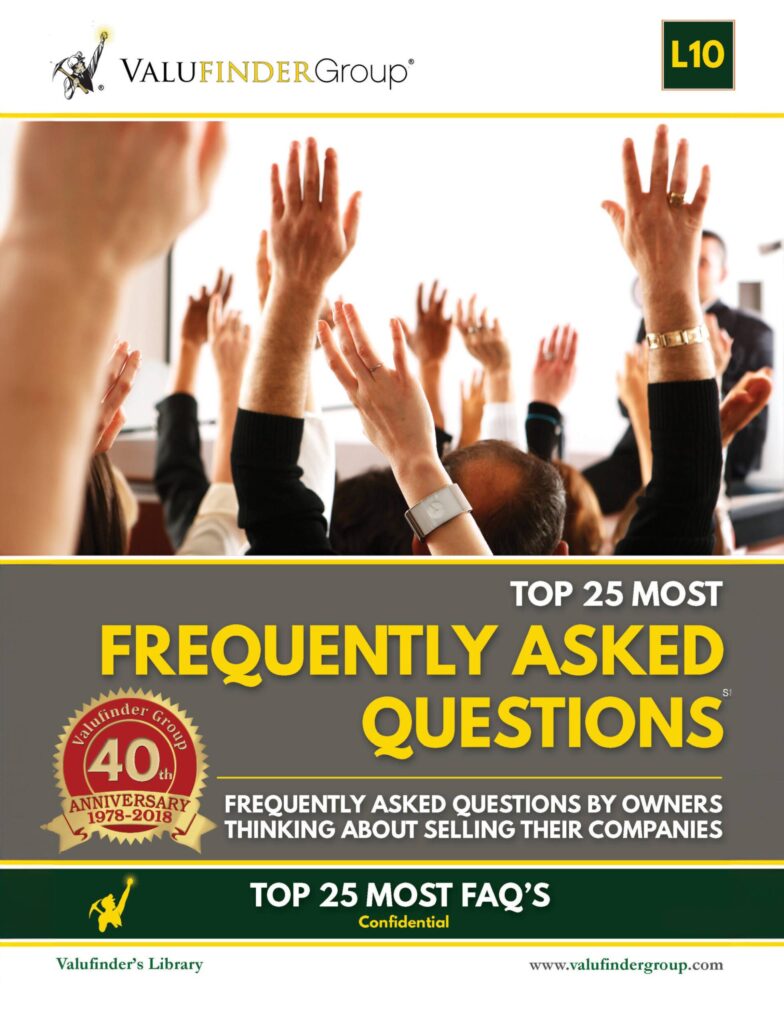Table of Contents
We get it—deciding to sell is a big step. This chapter talks about how you can explore the idea, ask questions, and gather insights without committing right away.
Timing matters, but it’s not always clear when to make the move. Here, we look at different factors to help you figure out when selling might be most beneficial for your business.
Don’t worry—you’re free to explore your options without any strings attached. This chapter explains when, if ever, you’d have an obligation to us.
You’re in control here. We go over what happens if you decide to pause or stop the process after initial discussions have started.
This chapter lays out how we can set up low-pressure, exploratory chats with buyers, letting you feel things out without any commitments.
Your privacy is a top priority. Here, we talk about the steps we take to keep your information confidential throughout the entire process.
It’s normal to want to keep things under wraps. We cover what kind of information buyers typically need early on and how we handle sensitive details.
We explain how you can present these financial adjustments to help buyers see the real profitability of your business.
Audited statements can be helpful, but they’re not always necessary. This chapter explores when it might make sense and what to do if you don’t have them.
The LOI is a key step in the process, setting the framework for what’s to come. We break down what it includes and why it’s important before diving into due diligence.
Due diligence is where the buyer takes a closer look under the hood. This chapter walks you through what to expect and how we help guide you through this detailed review.
It’s best to be upfront about any issues. Here, we talk about why early disclosure is usually the smarter move and how it can actually build trust with the buyer.
It’s possible, and we discuss the scenarios where adjusting the deal terms might be on the table if your business exceeds expectations.
We break down the typical timeline from start to finish, so you know what to expect and how long each phase might take.
It’s tempting to stick with your usual lawyer, but we cover why having an experienced M&A attorney can make all the difference in a smoother transaction.
We outline the typical costs you might face and clarify which expenses are usually covered by the buyer versus the seller.
Timing is everything when it comes to sharing the news. We talk about how to manage this carefully to minimize disruption and keep things running smoothly.
We give you the rundown on strategic buyers versus financial buyers and what each type might mean for your business and your goals.
Negotiation can feel like a dance, and we guide you through how it typically unfolds and what factors come into play to shape the deal.
Leverage is a common tool in deal-making. Here, we explain how debt is used in the structure of a transaction and what it means for the deal.
We break down the types of debt you might encounter in a leveraged deal, helping you understand the different layers and what they involve.
This chapter goes over how your existing debts are handled in the sale process, including what’s typically paid off or carried over.
We cover what these legal assurances mean for you and how they help protect both you and the buyer in the transaction.
We discuss why asking for a deposit isn’t usually part of the process and what shows the buyer’s commitment instead.
We outline what a typical transition period looks like and what kind of involvement you might be expected to have after the sale.

